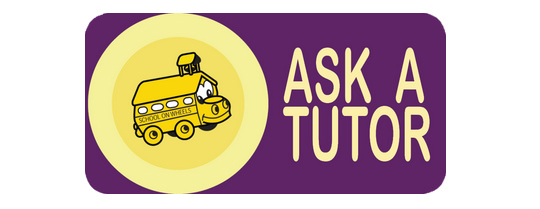Ask A Tutor Tuesday – 4/12/2016

Question: “I tutor a 6 year old at a public library. We have been meeting at the public tables near the computer area, and I find he is very easily distracted by whatever is going on. He doesn’t like to sit down and I can’t keep his attention for more than a few minutes. Also we have had difficulty with library etiquette–talking in quiet voices, not leaving papers or trash behind, etc. I don’t want to distract the other library patrons but there is no where else for us to meet.”
Setting behavioral expectations for younger students is often challenging, especially when a student has minimal or no preschool experience. To make a young student more engaged, I do my best to incorporate two things: consistency and interests.
For example, if possible, try to work in the same area of the library every time you have a session. This way the student starts understanding this is a “work area” and that there are different expectations for behavior in comparison to how he would act at home or somewhere else. It also helps to develop a consistent schedule. A possible session schedule could be:
(5 minutes) Review behavior expectations, play a quick game, and ask how he’s doing
(10 minutes) Work on reading/language arts homework
3 minute break – Does the student get an incentive for finishing his first assignment?
(10 minutes) Work on math homework
3 minute break
(10 minutes) Work on another assignment
(3 minutes) Review behavior expectations (Did he follow the rules? If not, what does he have to work on?)
Offering break times after completing assignments is crucial because students tend to be distracted after working for 10-15 minute periods. However, when implementing a break time, you need to set firm time limits. Using a phone or timer is helpful because when students hear the alarm, they understand that the break is over and that it’s time to work again.
You can also promote consistency by creating an ‘expectations chart’ that lists 3-4 rules for behaving in the library. For younger students, it’s important to keep rules short and concise and include many pictures in case they have trouble reading. Here is a good example of a rules list.
The second part to helping younger students become more engaged is incorporating their interests into the session. For example, if the student loves pirates, then pretend you’re on a treasure hunt when entering library. I tell my students that pirates have to be really quiet when they’re on a treasure hunt or else they will be caught and can’t get the treasure. At the end of the session if they’re showing a lot of perseverance and self-control, then you can give them a “treasure” as a reward. The treasure could be a sticker or free time or whatever else you want to use.
Have fun with your sessions! Remember, consistency is key!
About the Tutor: Natalie Platon has over seven years of experience working with K-12th grade students in different capacities and possesses a multiple subjects teaching credential. She has a deep passion for working in diverse and underserved communities and has worked in after-school programs, tutoring organizations, shelters, and schools. She currently works at KIPP Iluminar Academy in East LA as a full-time substitute teacher.
Have a question for our Ask a Tutor feature?
Email askatutor [at] schoolonwheels.org or use the #AskATutor hashtag on any of our social media sites.
